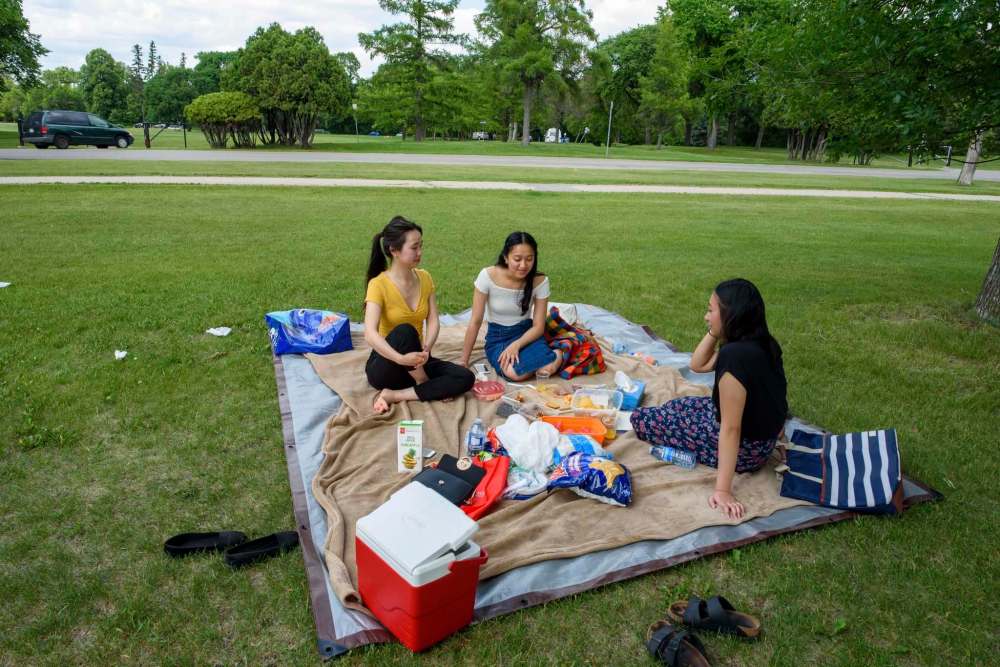Heat wave a sign of summers to come
Read this article for free:
or
Already have an account? Log in here »
To continue reading, please subscribe:
Monthly Digital Subscription
$0 for the first 4 weeks*
- Enjoy unlimited reading on winnipegfreepress.com
- Read the E-Edition, our digital replica newspaper
- Access News Break, our award-winning app
- Play interactive puzzles
*No charge for 4 weeks then price increases to the regular rate of $19.00 plus GST every four weeks. Offer available to new and qualified returning subscribers only. Cancel any time.
Monthly Digital Subscription
$4.75/week*
- Enjoy unlimited reading on winnipegfreepress.com
- Read the E-Edition, our digital replica newspaper
- Access News Break, our award-winning app
- Play interactive puzzles
*Billed as $19 plus GST every four weeks. Cancel any time.
To continue reading, please subscribe:
Add Free Press access to your Brandon Sun subscription for only an additional
$1 for the first 4 weeks*
*Your next subscription payment will increase by $1.00 and you will be charged $16.99 plus GST for four weeks. After four weeks, your payment will increase to $23.99 plus GST every four weeks.
Read unlimited articles for free today:
or
Already have an account? Log in here »
Hey there, time traveller!
This article was published 29/06/2020 (1994 days ago), so information in it may no longer be current.
The signs of the current heat wave gripping the city are all around — people sweating through their shirts just walking down the street, others seeking shelter from the oppressive heat wherever there is shade and a bit of breeze.
Environment Canada has issued a heat warning in Winnipeg, advising that a “stagnant weather pattern” has brought with it a week full of temperature highs each day between 29C and 34C, with expected humidex values around 40C.
This heat wave is a sign of things to come as Winnipeg is set to be one of the cities in Canada that sees the most dramatic increase in the number of extreme heat days in years to come, due to climate change.

Between 1976 and 2005, Winnipeg saw an average of 14.3 days per year where the high was above 30C. If climate change continues unabated, that average between 2050 and 2080 is expected to rise by more than 360 per cent to 52.1 days per year, according to the latest climate models made available through the Prairie Climate Centre’s Climate Atlas. Southern Ontario and the Montreal region are the only places in the country expecting to see more dramatic increases.
More heat waves will put the most strain on the homeless, the aging and those who suffer from severe medical conditions.
“The big number of mortalities associated with heat waves, tend to be in the elderly (population),” says Dr. Joe Vipond, the interim president of the Canadian Association of Physicians for the Environment and an emergency room doctor in Calgary, Alta. “There’s a couple reasons why the elderly are more at risk. The first is that they don’t have as good of temperature regulation as younger people. They also have a lot more chronic diseases … and they tend to be lonelier, so people living by themselves might not have people checking in on them.”

There is also often an overlap between lower socio-economic status and the aging population, Vipond explains, which might leave people who need protection from the heat the most without it.
Even in younger people, the heat will start to have significant negative effects as the length of heat waves expands, Vipond says. “Your body can adapt to these abnormalities for short periods of time, but when they start to become prolonged, that’s when things start to break down. So you’re probably not going to have a lot of excess mortality on day one of the heat wave, but on day seven of the heat wave, that’s a big deal.”
Vipond says that while the number of days above 30 degrees is important for people’s health and how the body is able to handle the heat, he says perhaps even more important is that the number of cool nights during those heat waves is set to decrease.
“(Hot nights) mean you’re not getting that ability to cool down, or getting a restful sleep. That may be as important, or more important.” – Dr. Joe Vipond
“(Hot nights) mean you’re not getting that ability to cool down, or getting a restful sleep. That may be as important, or more important,” Vipond told the Free Press.
Between 1976 and 2005, Winnipeg had on average 1.6 days where the nighttime temperature stayed above 20 C. If emissions continue at status quo levels, between 2050 and 2080, that number is expected to explode to 21.1 days.
The biggest reaction the province currently offers to address heat waves, is an increase in public communication and awareness, but much of the implementation of further measures — such as opening cooling centres — remains the responsibility of regional health authorities, says Dr. Denise Koh, the medical officer of health for emergency preparedness and response for Manitoba Health.
She says she is concerned about the mounting number of extremely hot days Winnipeg is facing in the coming decades.

“There’s no question about whether the heat is coming, and whether climate change is happening — it’s more: what things can we do to decrease the damaging effects of that? And making sure we’re as prepared as we can be,” Koh said.
Koh said right now Manitoba has a great warning system in place for when these weather events are coming, but likely more resources will be needed in the regions to support responses going forward.
“There are programs that other cities have done where they go and check on the more vulnerable folks in the communities, so there definitely are more things that we could be doing,” Koh said.
Koh asks that all Winnipeggers try to seek refuge from the sun and heat, stay hydrated and access the community pools, spray pads and cooling centres as needed if air conditioning isn’t available. She says planning your activities and where to find relief from the heat is critical. People should also check in on the older people in their lives, as well as the city’s vulnerable population if they appear to be in medical distress.
sarah.lawrynuik@freepress.mb.ca





